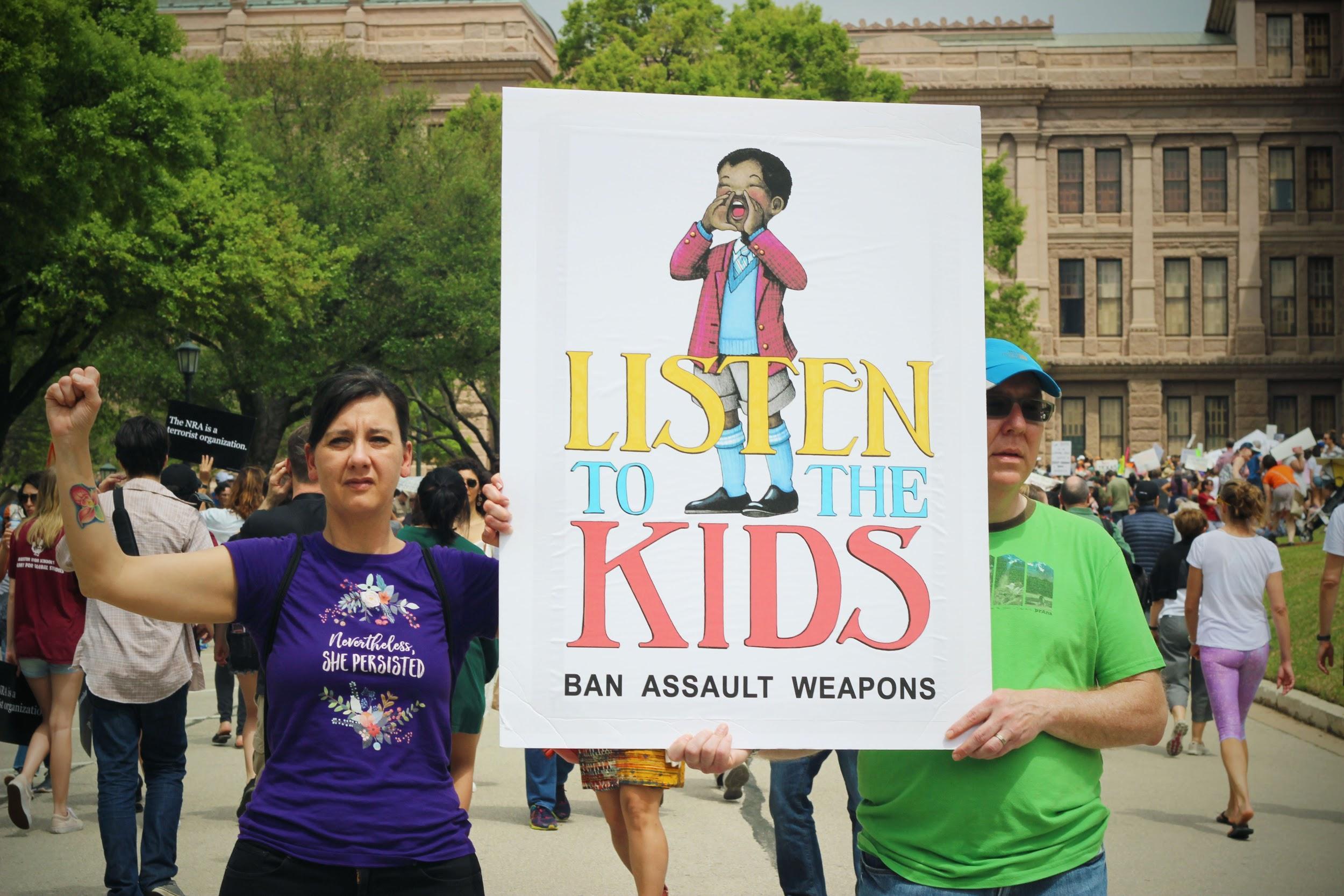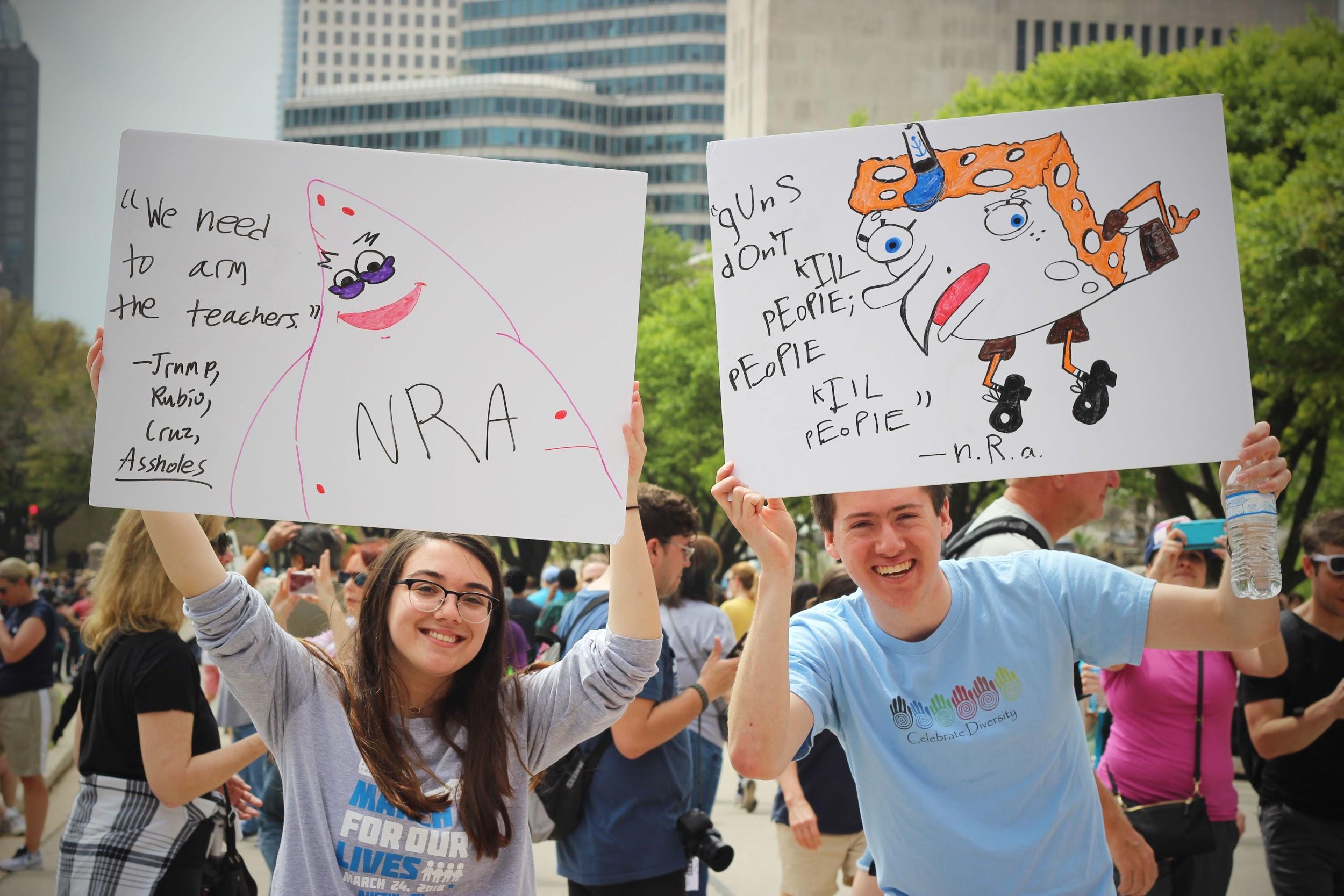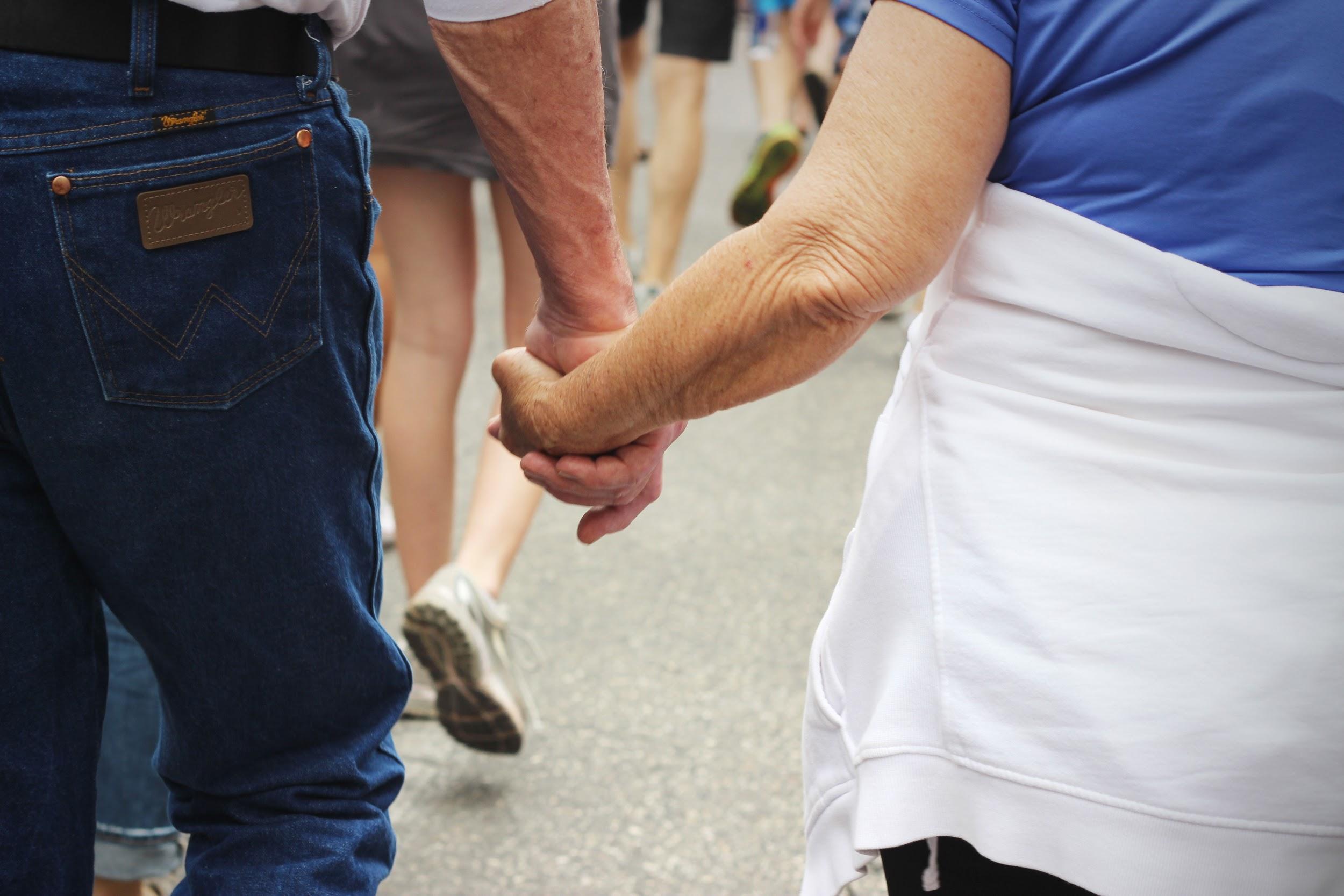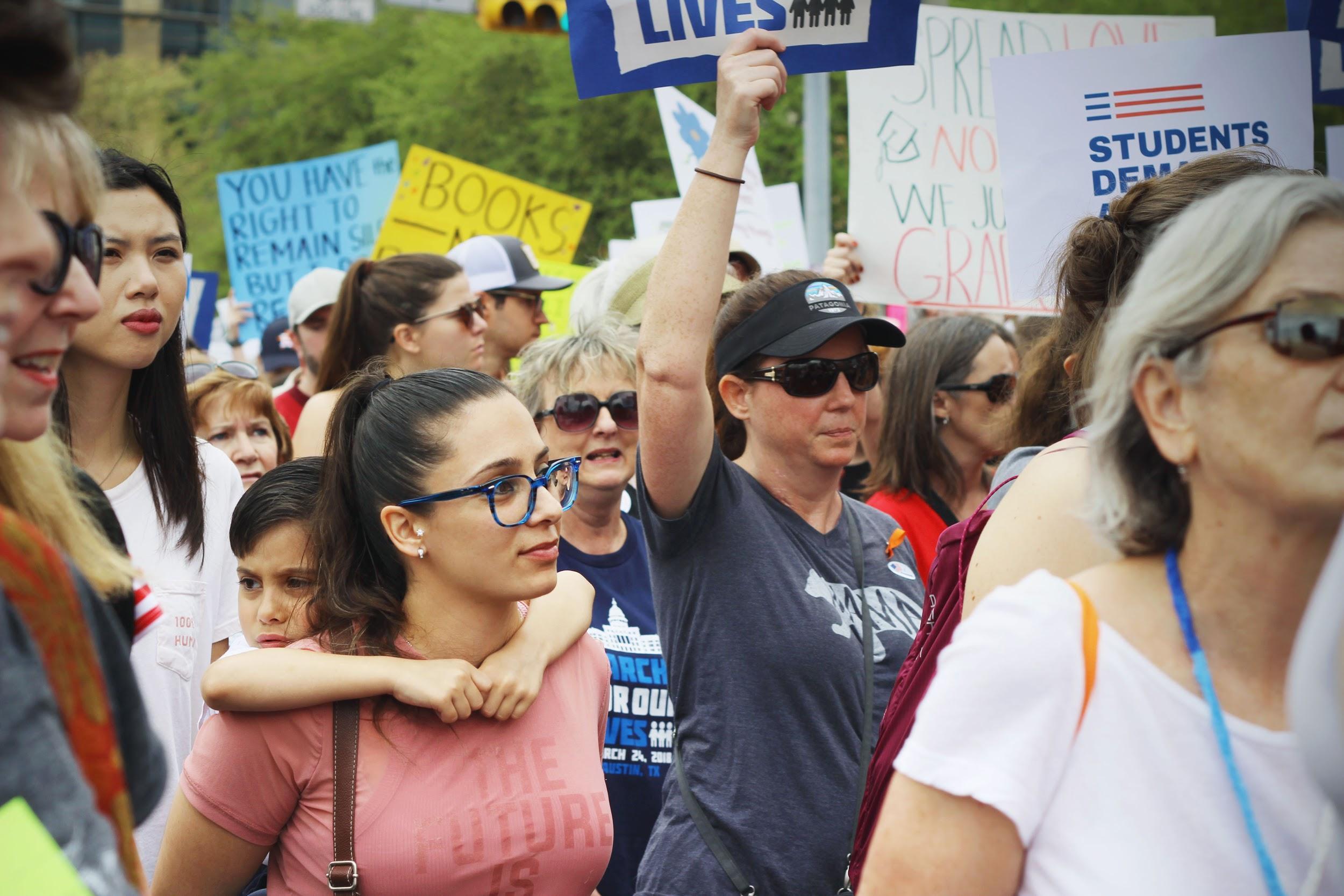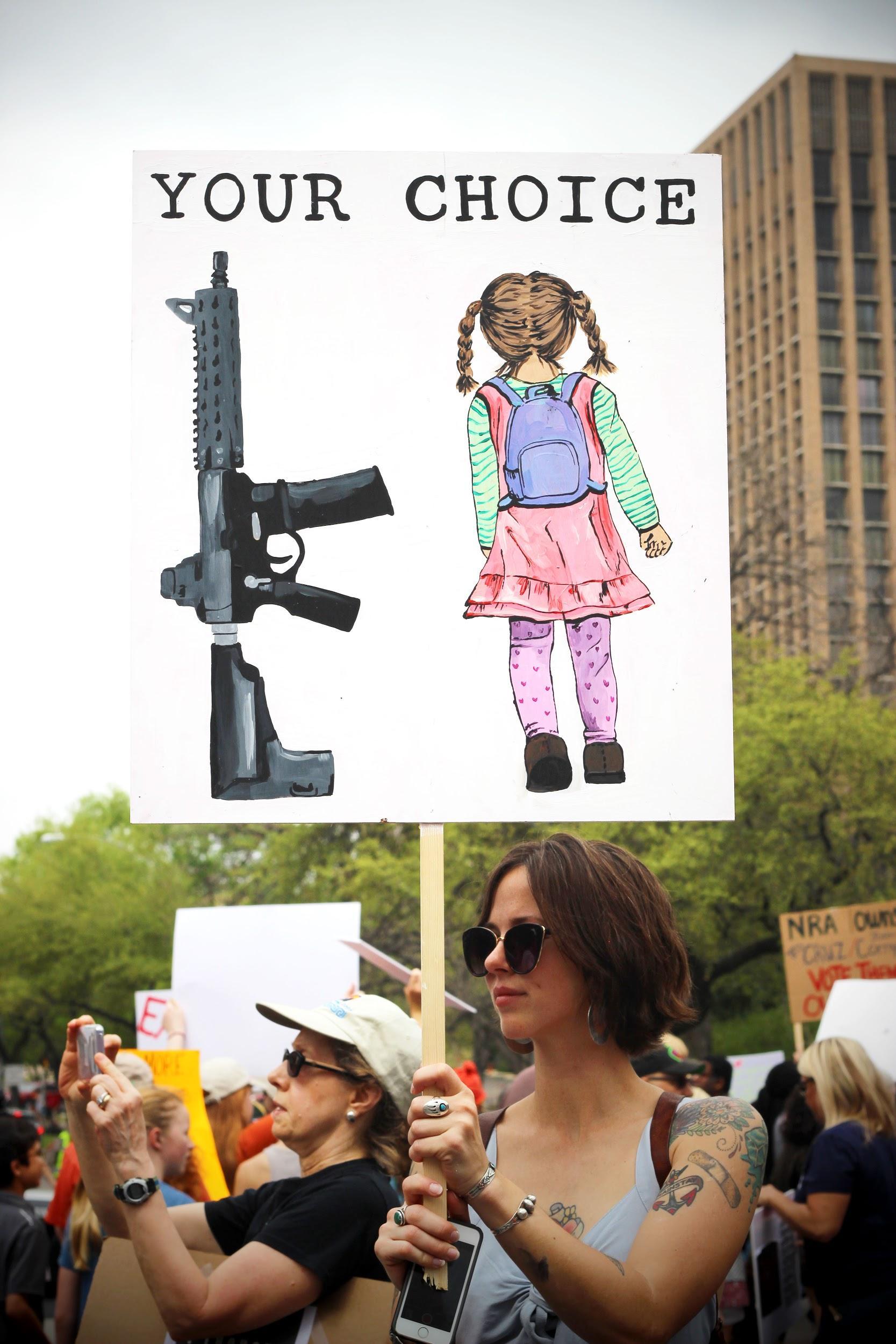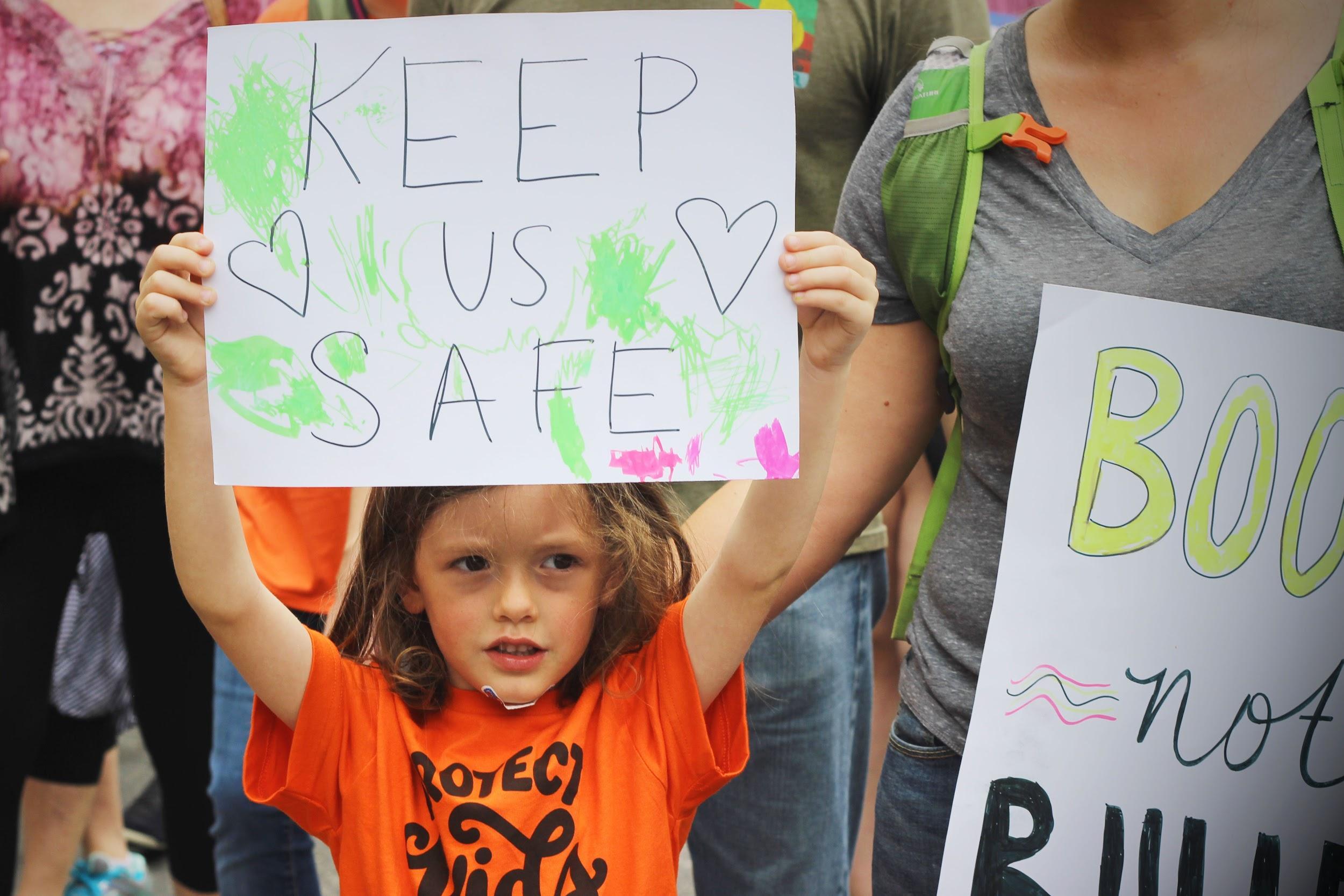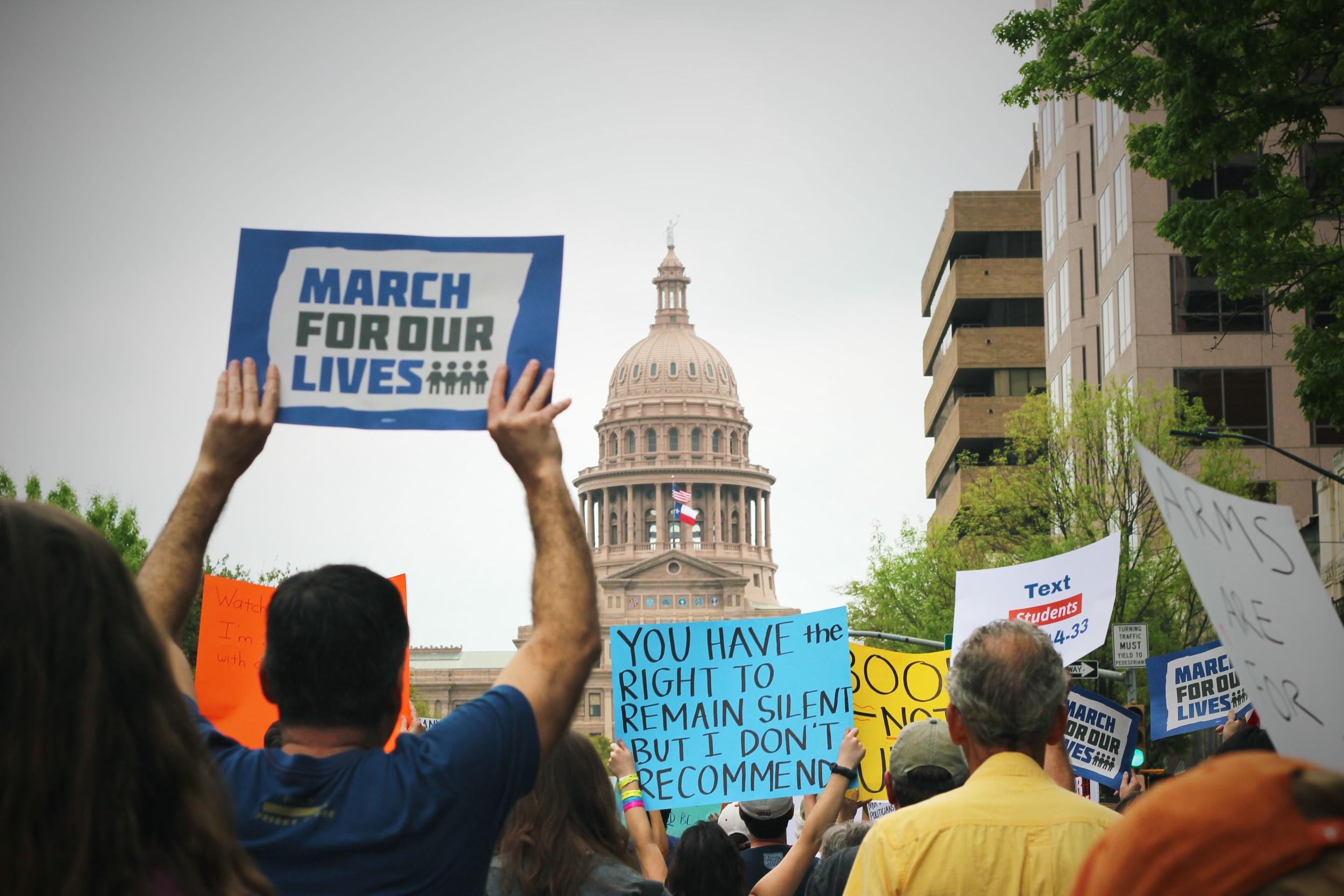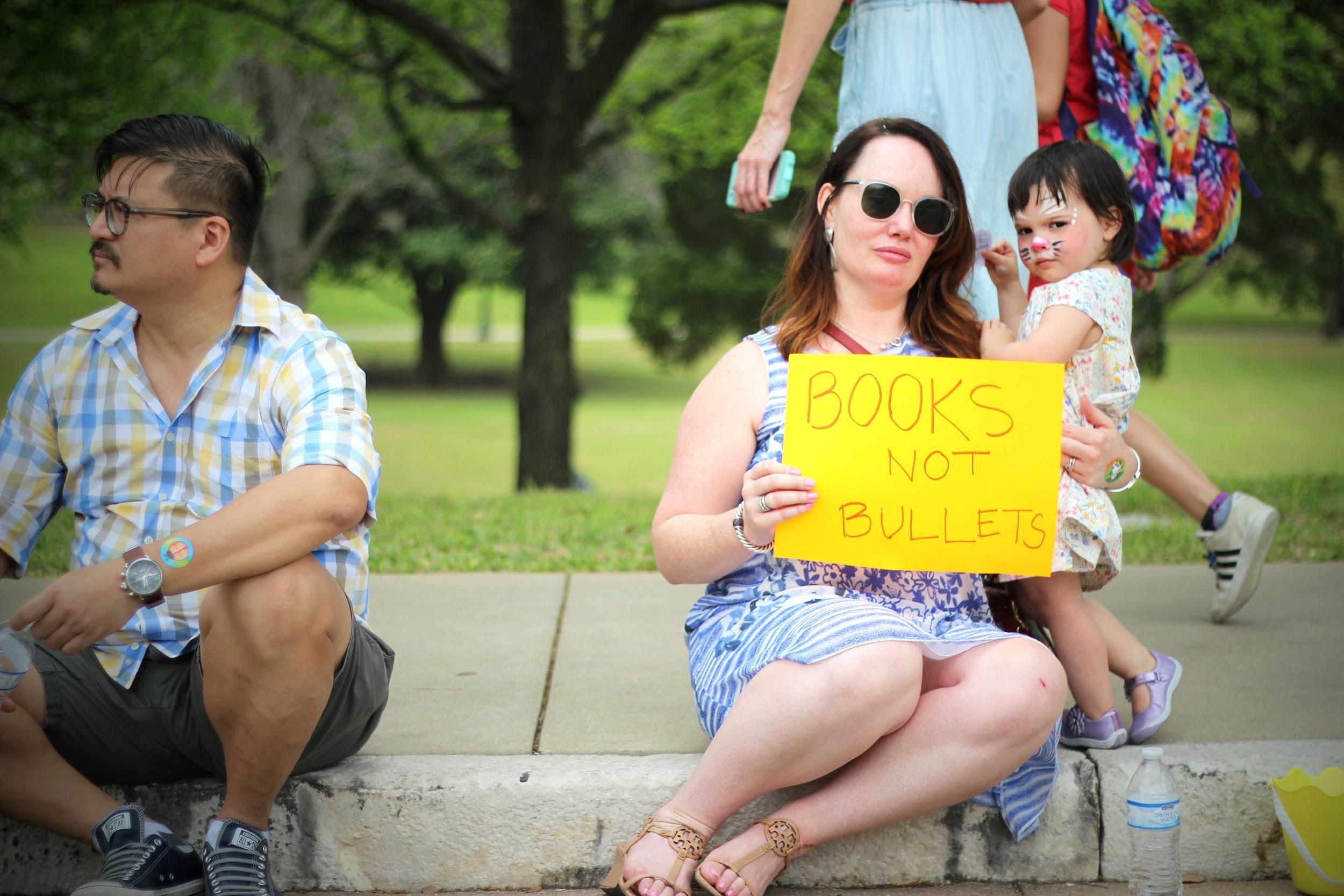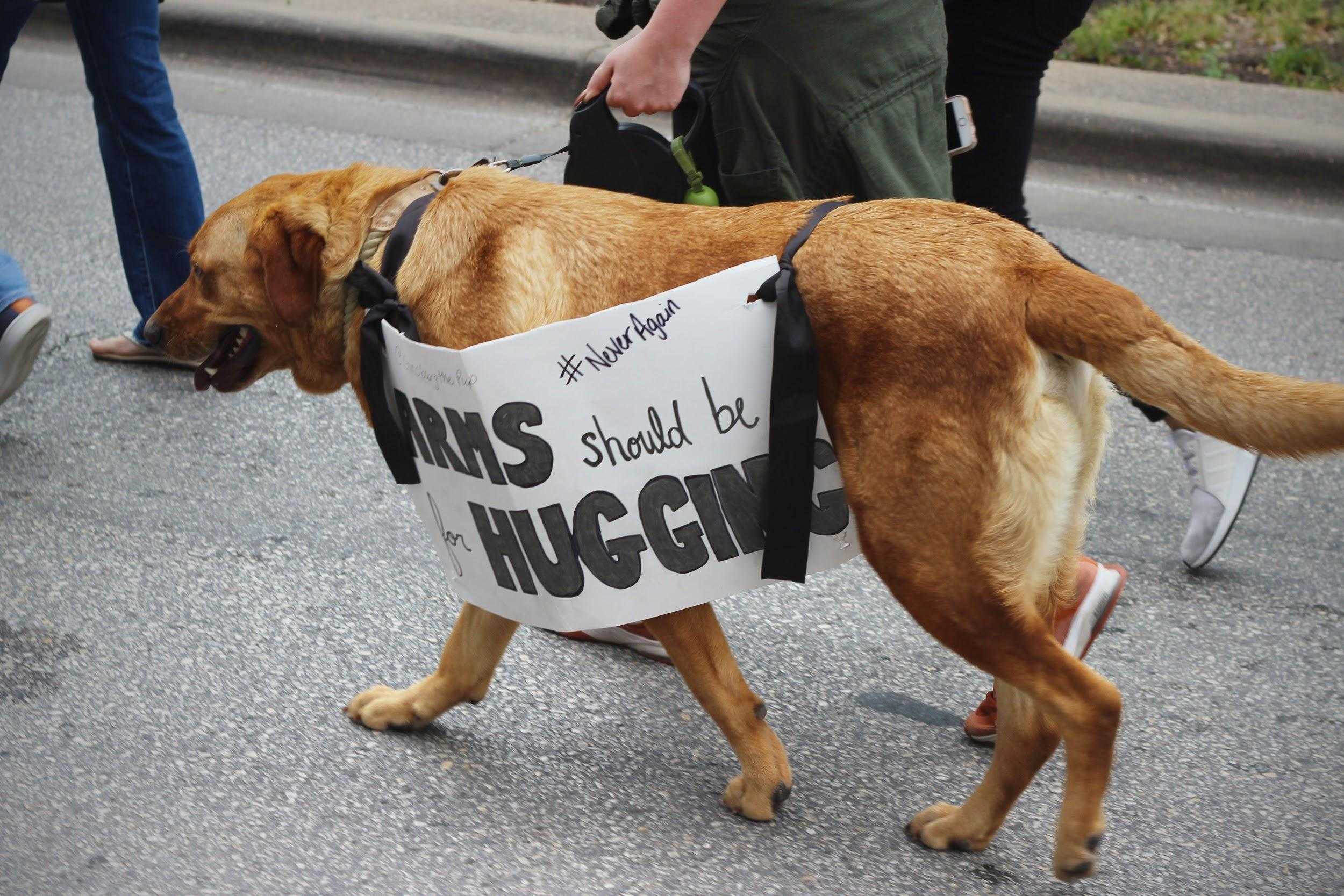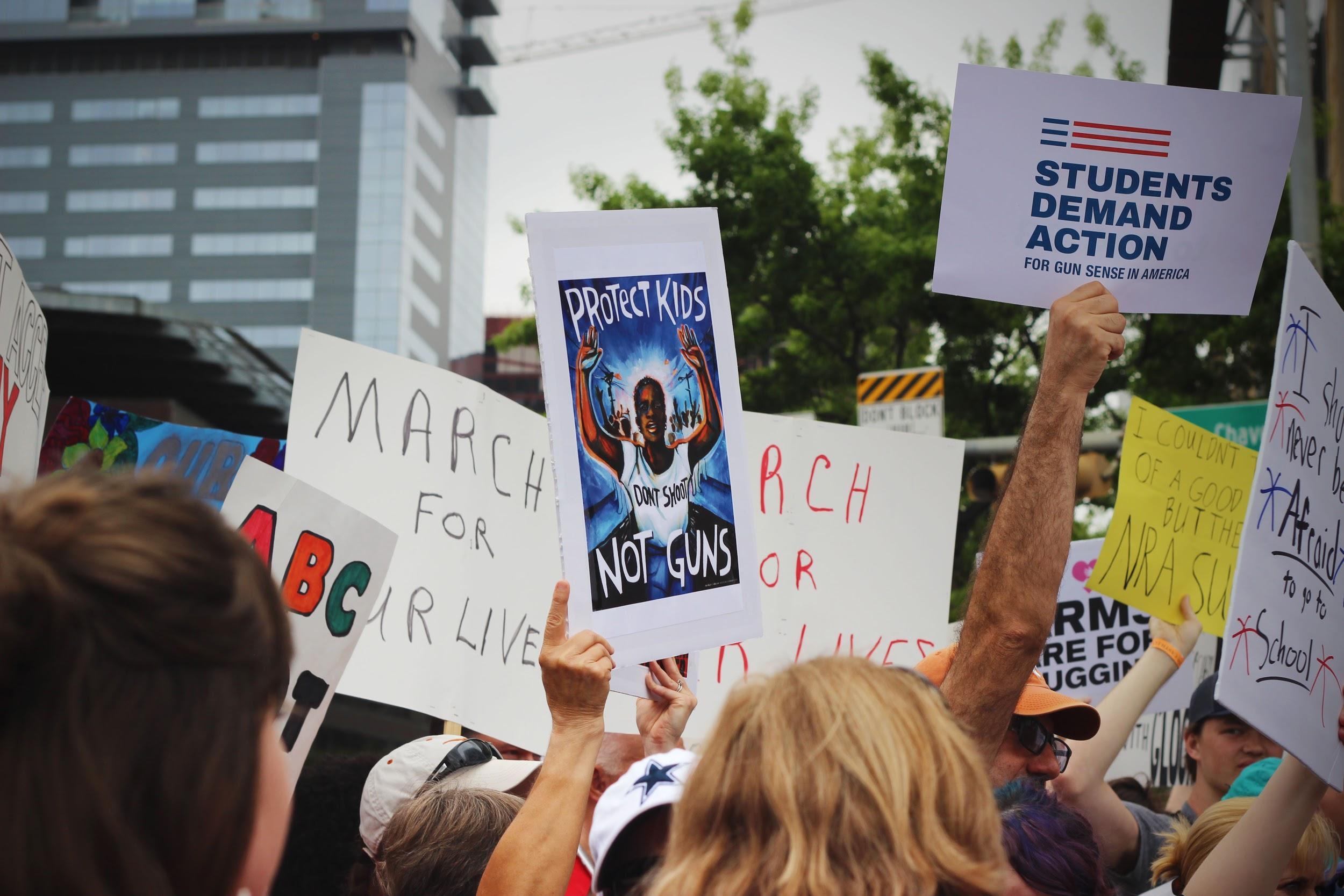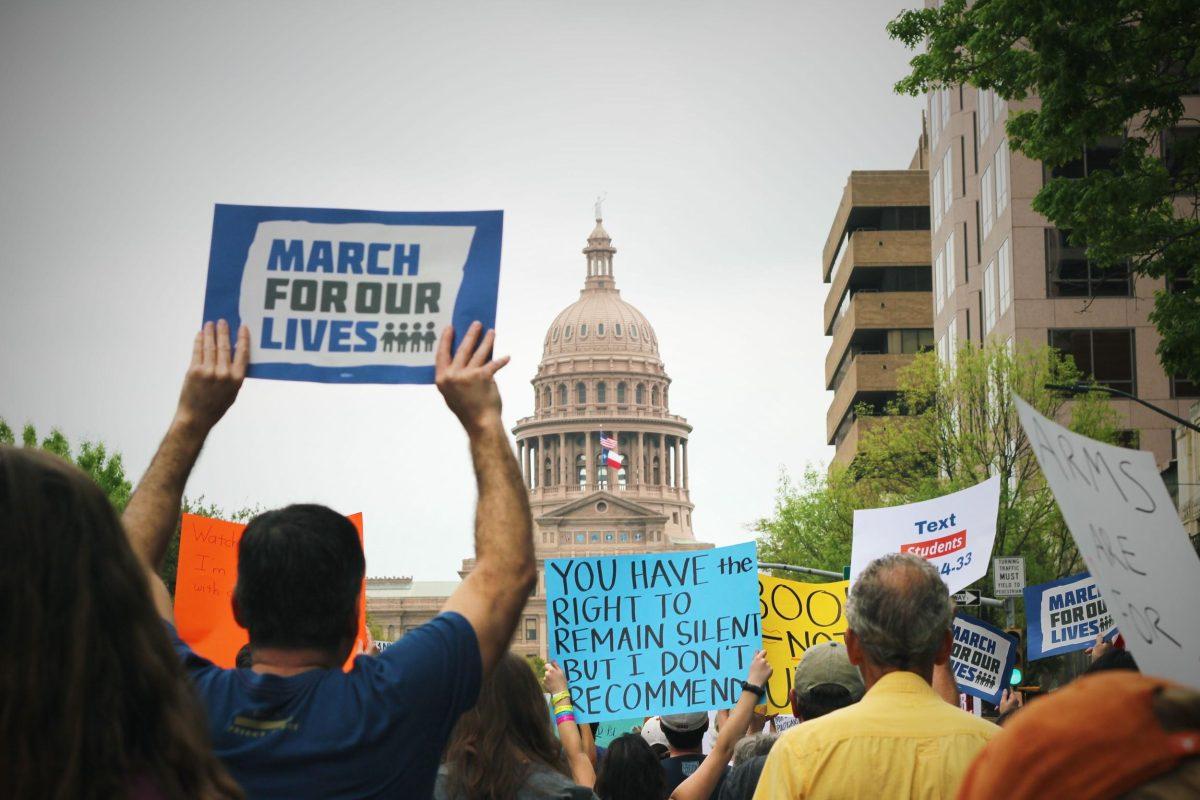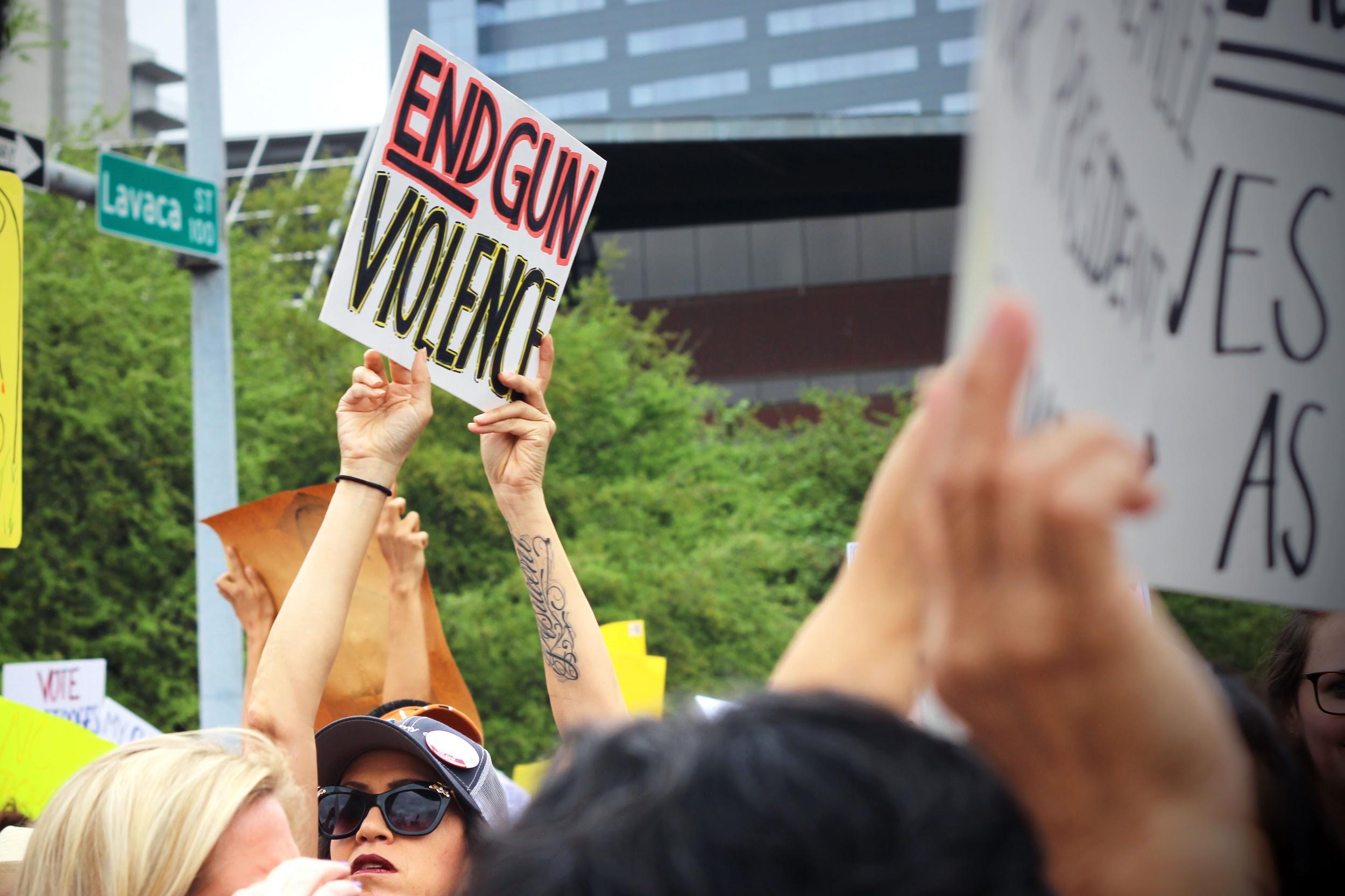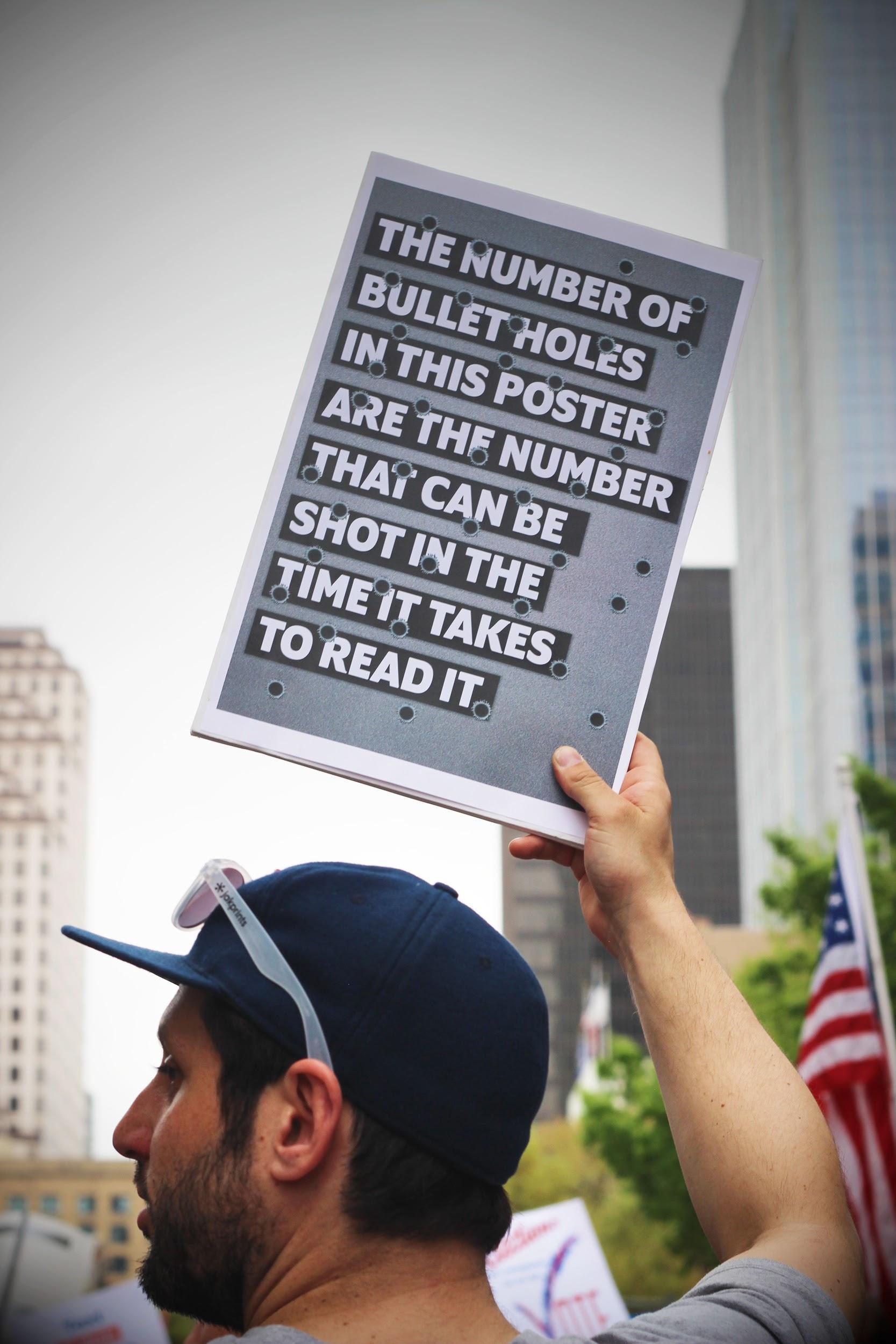Participants begin the march at City Hall and make their way to the Capitol.
Around 20,000 people convened at the Capitol on Saturday to support speakers advocating for gun legislation in the wake of the Parkland shooting.
Story by William Kosinski
Photos by Kiana Fernandez and Alissa Jae-Lazo Kim
Participating in one of the many March For Our Lives demonstrations that occurred throughout cities in America the same day, protesters began at City Hall and walked down Congress Street toward the Capitol as chants of “vote them out!” echoed off buildings.
Many marchers were concerned for the safety of themselves and of people close to them. McNeil High School student Sabrina Romero grew up in Weston, Florida 15 minutes away from where some of her and her sister’s friends were killed in Parkland. “School is supposed to be a place where we can learn and where we can be safe,” Romero says. “Instead, people are scared of what happened and people are scared not knowing what’s going to happen. We can make a change.”
On the way to the Capitol, marchers speak out through chants, music and signs.
Kimberly Swanson, a music and human learning master’s student at the University of Texas at Austin, marched as a concerned future K-12 educator. After a bomb threat scared her students at an elementary school where she taught, she realized “(a school shooting) is something I do not want them to experience.” She says she wants to see guns removed from learning environments and legislation implemented to prevent dangerous individuals from possessing firearms.
The massive demonstration was first organized by LASA High School seniors Jack Kappelman, Conor Heffernan and Kari Siegenthaler. Already worried from a spree of shooting threats at their school, Parkland invigorated them to organize.
They only expected a few hundred students from Austin’s high schools to convene at the steps of City Hall. “By the end of Monday, the first day the (Facebook) event was up, we had 1,000 people,” Kappelman says. “At that point, we realized we were going to need a bigger space.” Volunteers from gun control advocacy groups, high schools, colleges and the government helped the students support the unexpected crowd.
One volunteer is Selina Eshraghi, a chemical engineering freshman at UT. She led media and dignitary outreach that helped attract support. A lifelong activist, she shifted her focus after her friend committed suicide with a gun at the age of 17. “It was never with something that personal,” Eshraghi says. “Becoming an activist for gun reform is a completely different experience with my own experience to drive me.” Eshraghi says in her speech, “We can save the students, we can save the teachers, and we can save the best friends.”
Eshraghi was among the many guests who spoke on the front steps of the Capitol. Many did not focus as much on guns but instead expressed anger and frustration toward lawmakers.
Marie-Therese Morosky, a fifth grader who stood on a cooler during her speech to reach the microphone, described how her friends never got the chance to grow up like she did after they were murdered in Sandy Hook Elementary. “I don’t want to see anything like this again,” she says. She visited Washington D.C. to meet with Senator Ted Cruz’s staffers who were moved and promised to tell Cruz about her. With no response or action, Morosky says, “I’ve had enough. If we remain united for change, then there is no lawmaker that can stop us.”
Heffernan agrees, adding in his speech, “To those who failed to fulfill their sworn duty of protecting us, you will be voted out!” Almost every other speaker called on the audience to create change by voting, including Texas Sen. Kirk Watson, Texas Rep. Gina Hinojosa and Mayor Steve Adler.
Volunteer deputy registrars attended the march to register high school students and other new voters. The registration, Heffernan says, “demonstrated everyone’s appetite to witness change.”
“We march, we protest, and we cry,” Rep. Hinojosa says. “We write letters. And on election day, we vote.”
